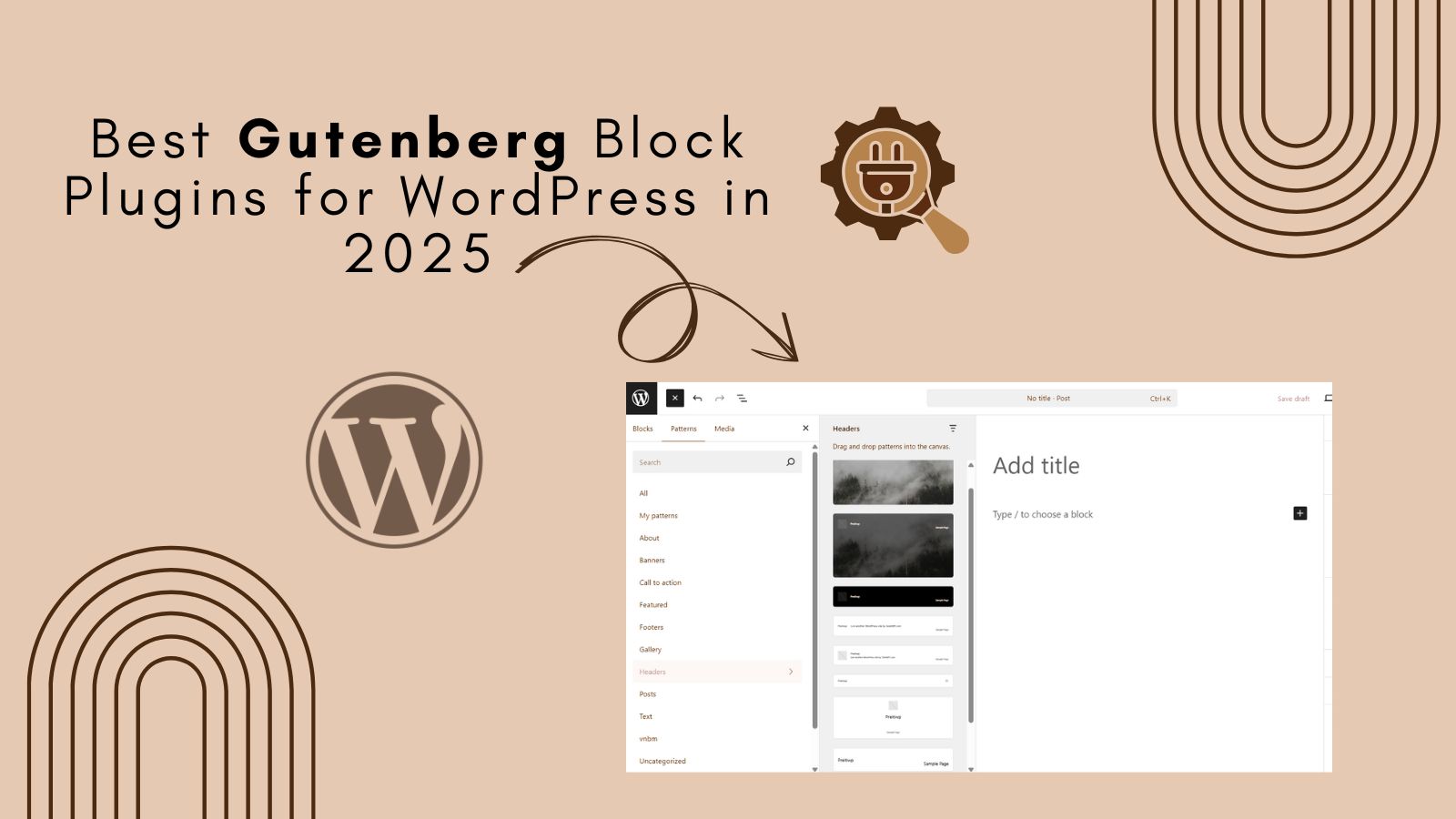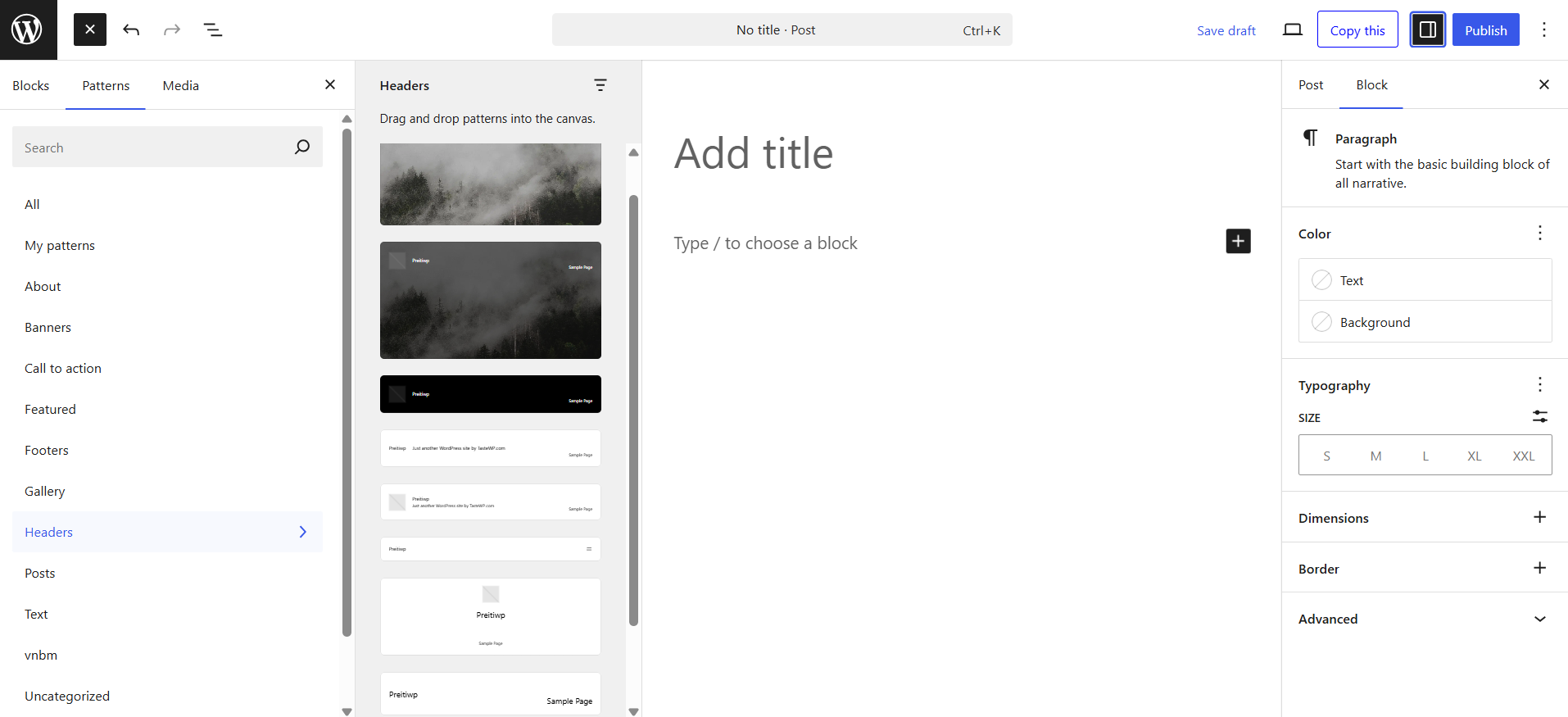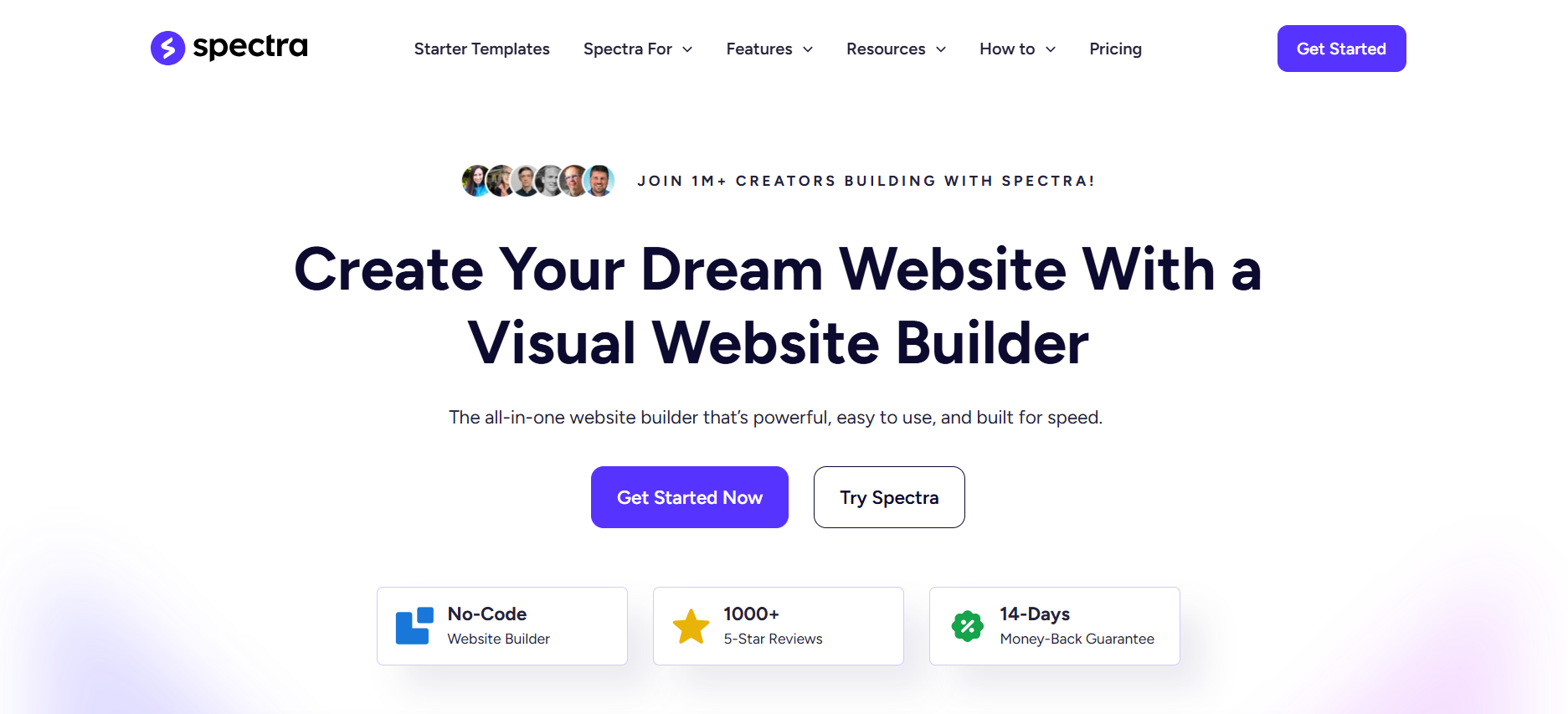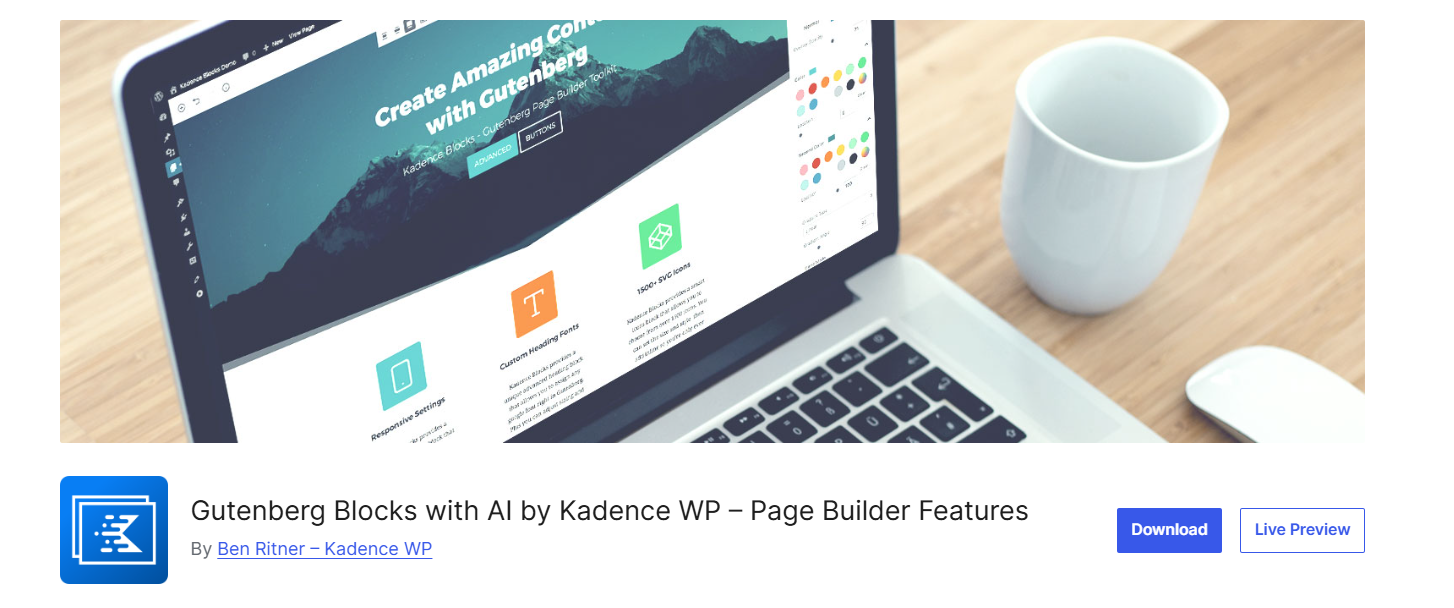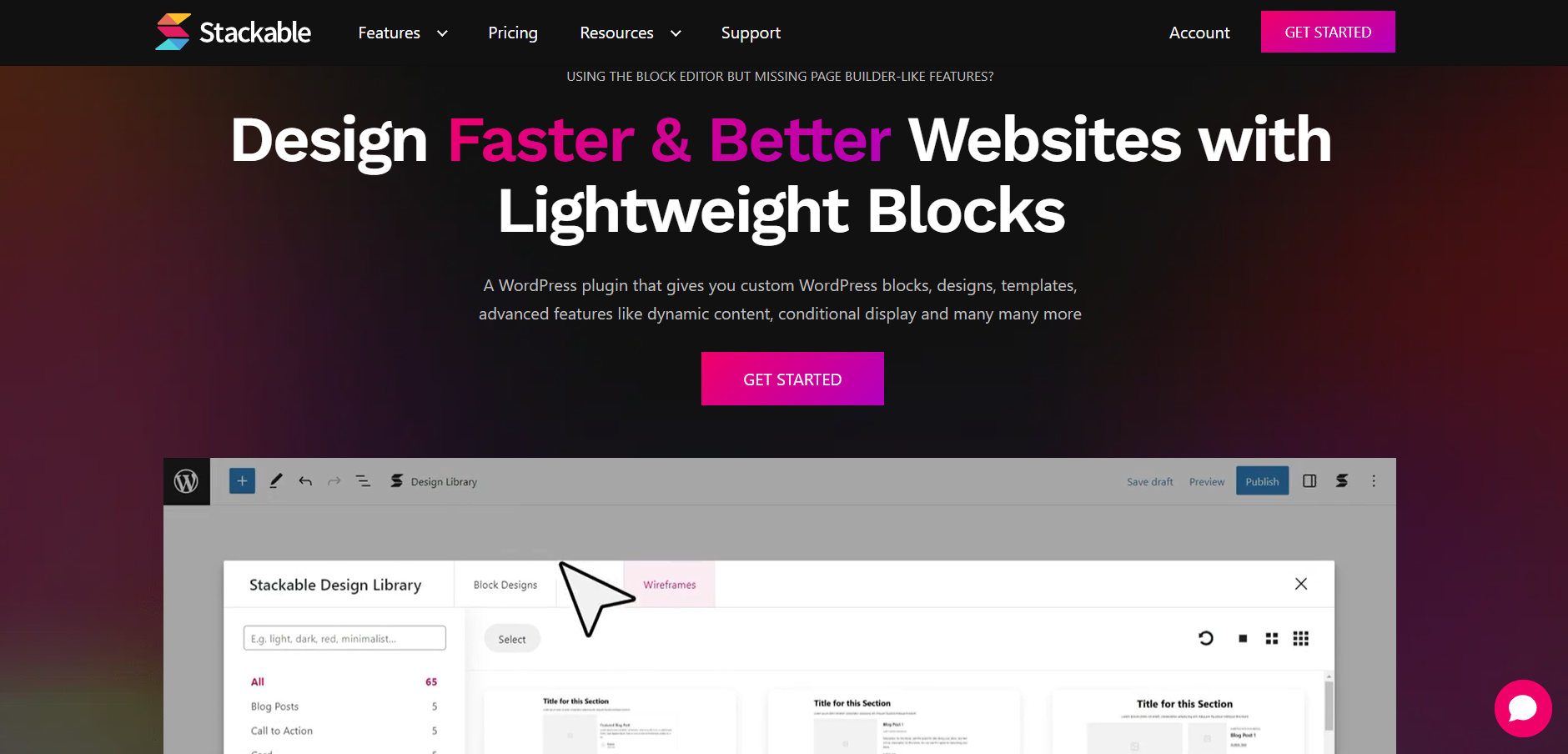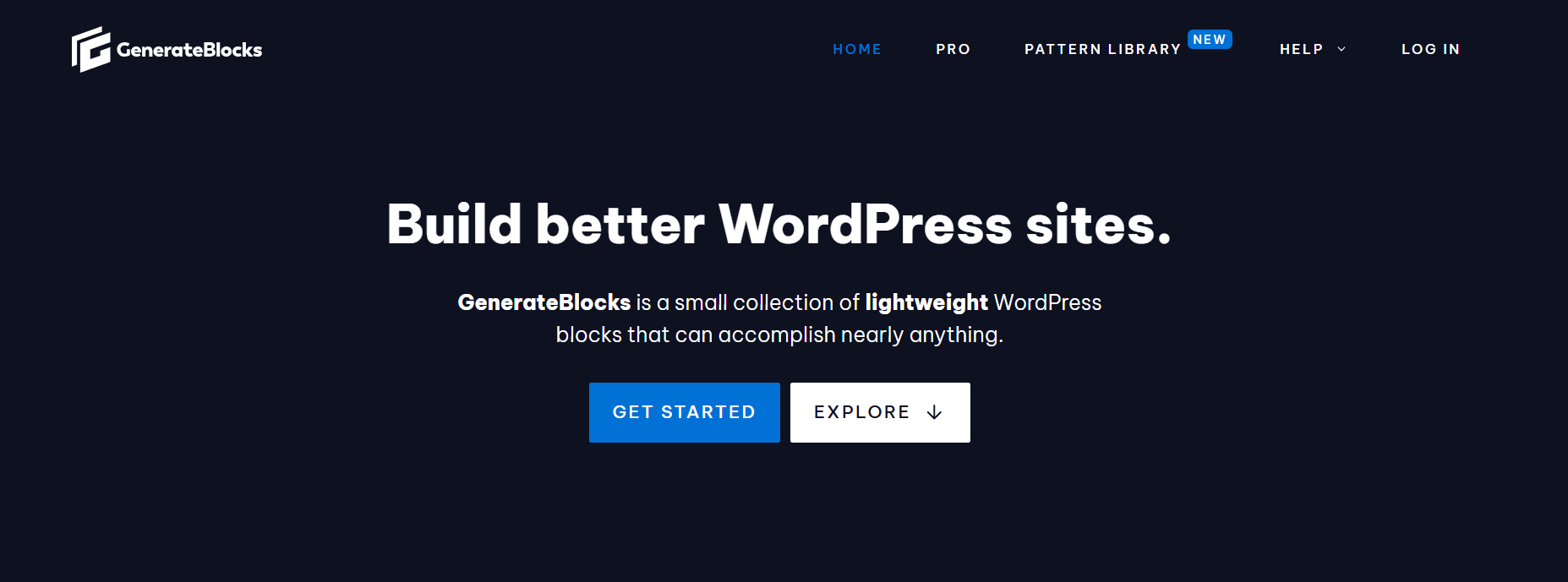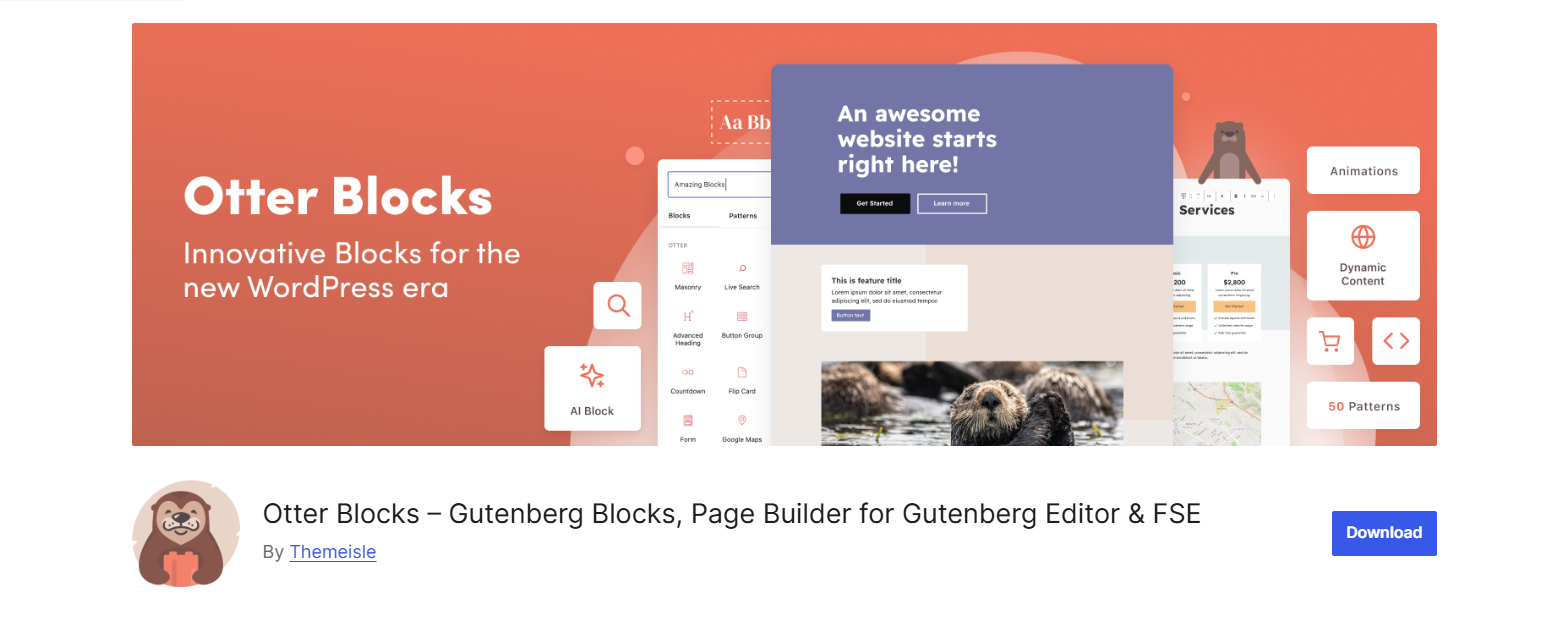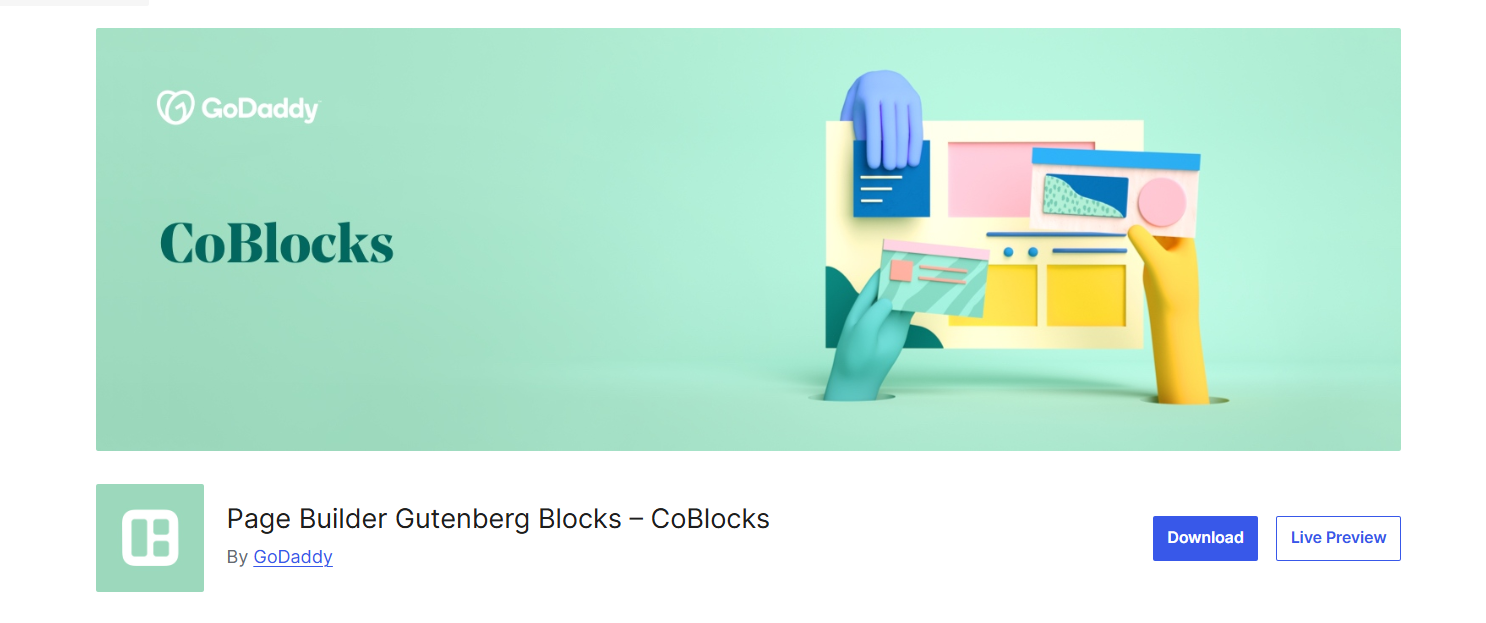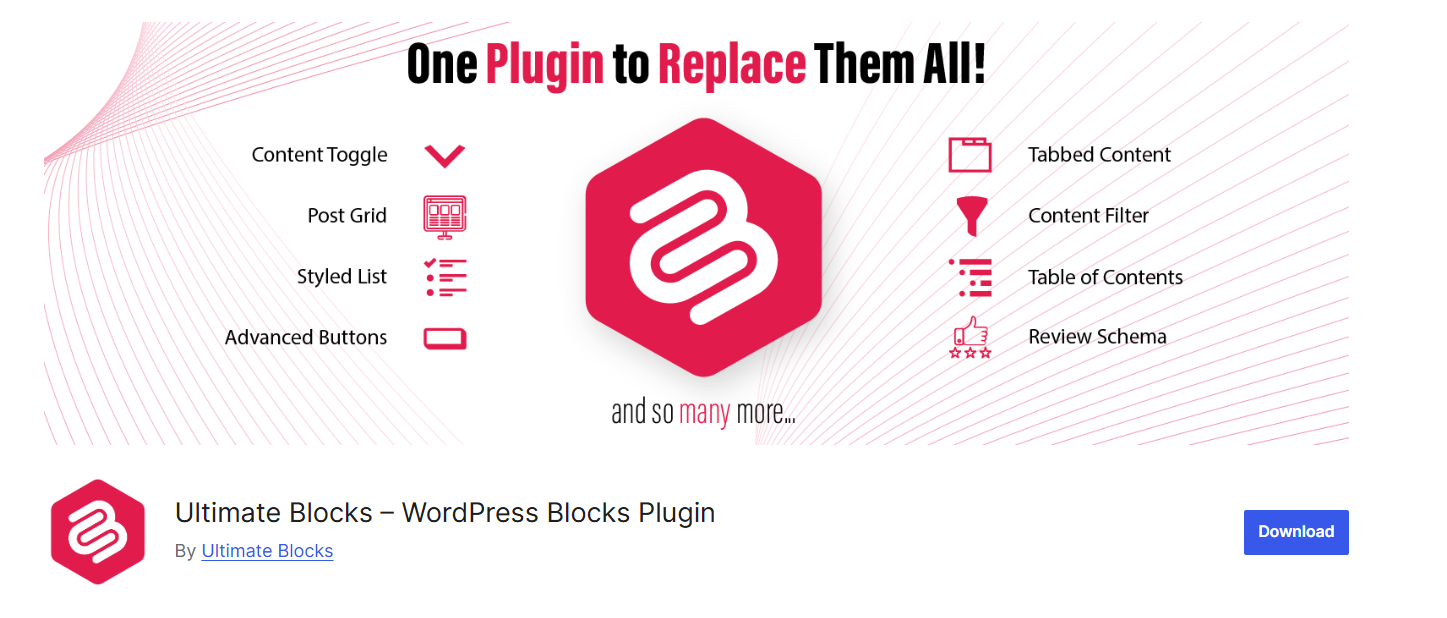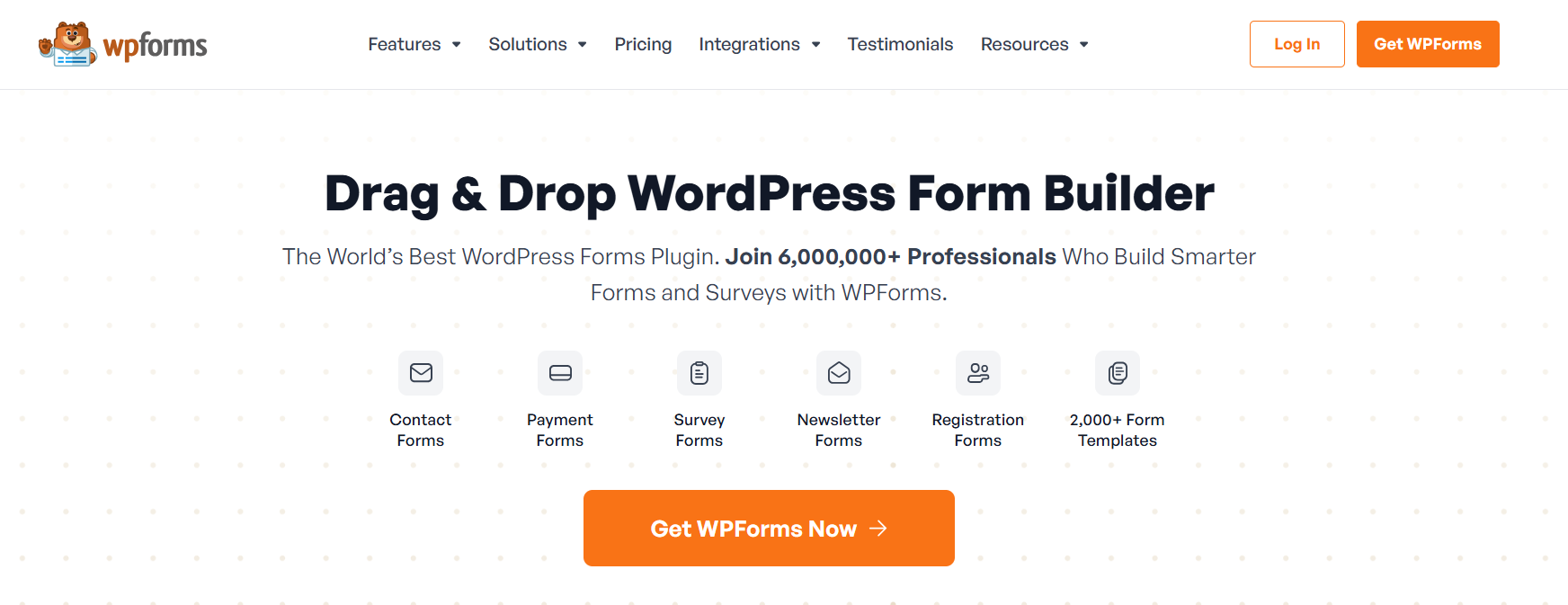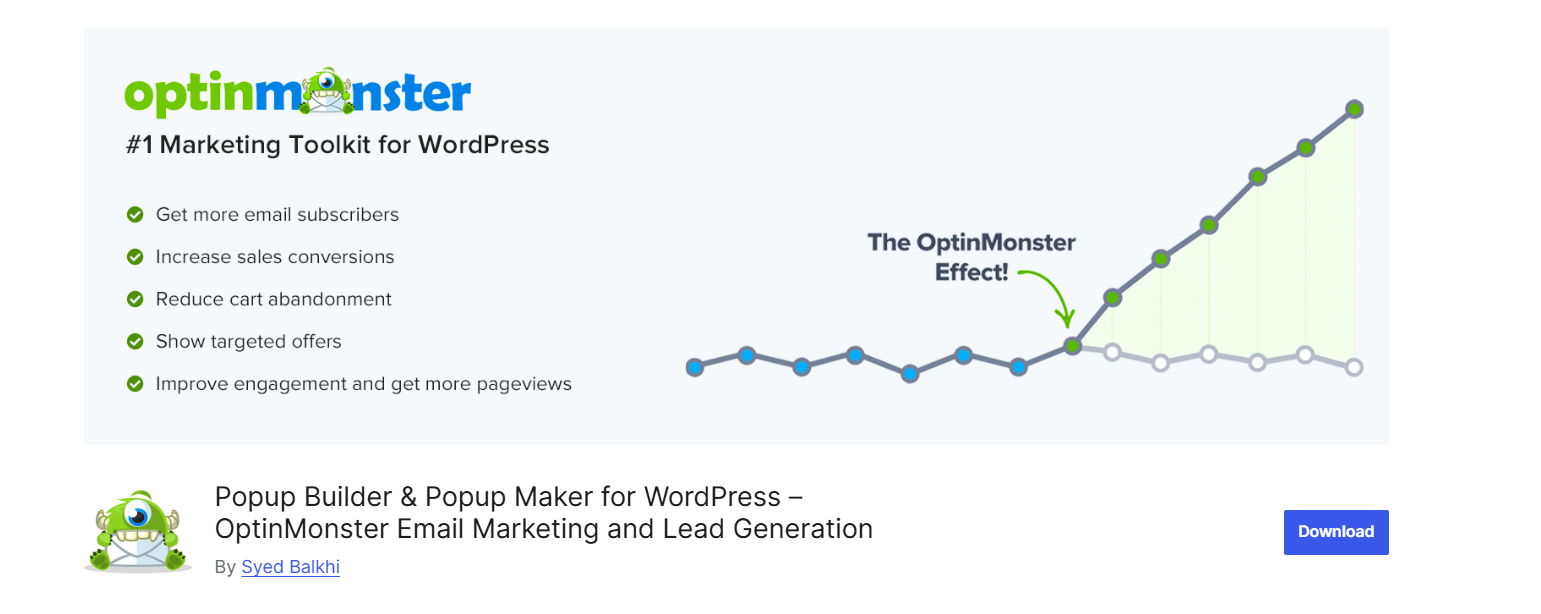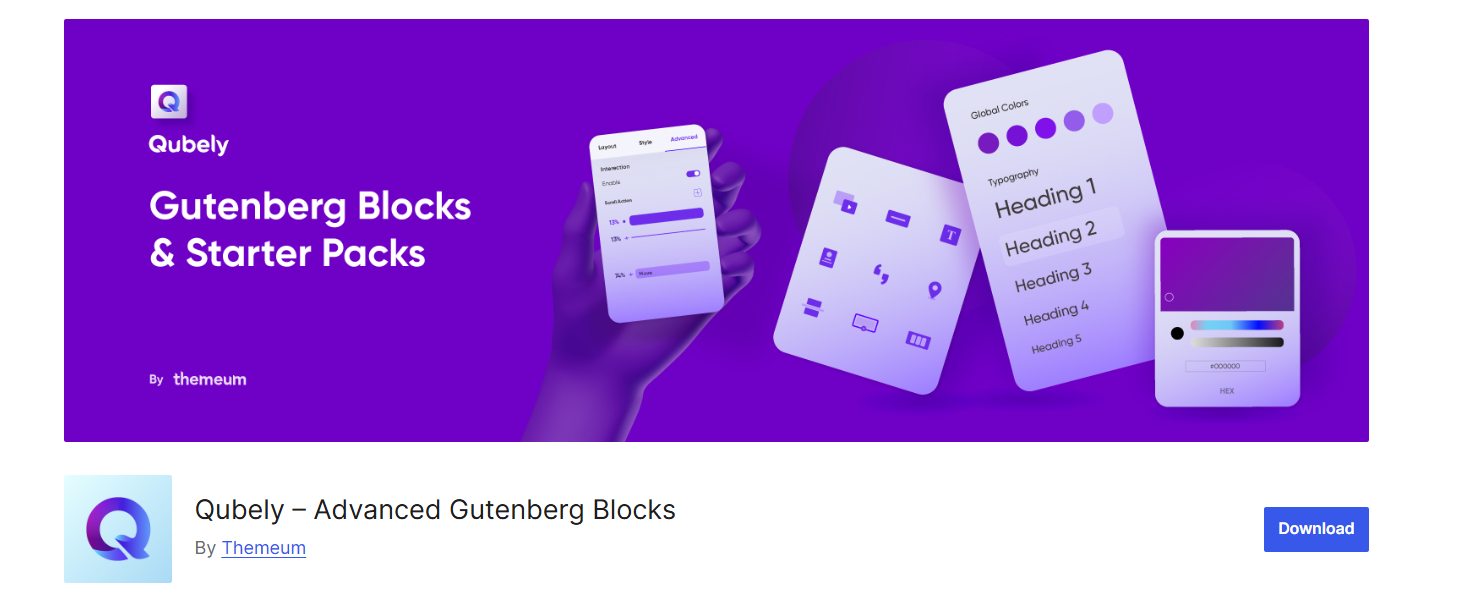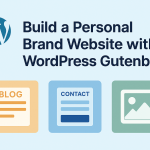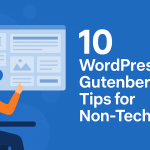Over the past few years, the Gutenberg editor has quietly reshaped how we build and design with WordPress. In 2025, it’s no longer just a content editor, it’s now a robust site-building experience. With Full Site Editing (FSE), Gutenberg allows users to control everything from headers to footers using blocks, offering a far more intuitive workflow than ever before. If you’re looking to enhance this experience, exploring the Best Gutenberg Block Plugins is the smartest way to unlock its full potential.
However, while Gutenberg has grown more powerful, it still doesn’t cover all the design or marketing needs that modern websites demand. This is where Gutenberg block plugins step in. These plugins introduce advanced blocks, layout options, and functionality that elevate what you can do inside the native editor, without needing a bulky page builder.
If you’re looking to build a modern WordPress website that’s fast, clean, and flexible, using the right block plugins can make a world of difference. Let’s explore what the Gutenberg editor actually is, and why these plugins are becoming so essential.
What Is the WordPress Gutenberg Block Editor?
The Gutenberg block editor is WordPress’s visual editor introduced in version 5.0. Instead of writing content in a single plain text box (like the old Classic Editor), Gutenberg lets users create with blocks. Each block represents a piece of content, whether it’s a paragraph, image, video, button, or column layout.
Think of it as LEGO for your website. You drag blocks into place, adjust their settings, and visually build your layout in real time. This modular approach is especially useful for non-developers because it removes the need for shortcodes or complex HTML.
Gutenberg now powers Full Site Editing (FSE) too, which means you’re no longer limited to post and page content. You can build entire themes and customize templates like your homepage, single posts, and even archive pages, entirely from the block editor.
Still, while Gutenberg provides the foundation, it doesn’t include many of the fancier blocks or design tools you might need for a professional site. That’s why many users turn to block plugins to expand Gutenberg’s capabilities.
Also Read: WordPress Block Patterns
Why You Need Gutenberg Block Plugins
Let’s be honest, out of the box, Gutenberg is a bit basic. It gives you the essentials, but if you’re looking to create complex layouts, showcase testimonials, add pricing tables, or build lead capture forms, the core blocks can feel pretty limited.
Block plugins solve this by offering entire libraries of pre-built content blocks that snap right into the editor. These include everything from advanced buttons and icon lists to carousels, accordions, tabs, forms, and more.
Many of these plugins also include pre-designed templates and block patterns, making it incredibly fast to build beautiful pages, even if you’re not a designer.
And because they’re built specifically for Gutenberg, they’re usually lightweight, fast-loading, and compatible with most modern WordPress themes.
Whether you want to boost conversions, speed up development, or create a cleaner user experience, Gutenberg block plugins are a must-have in 2025.
10 best Gutenberg Block Plugins for WordPress to Try in 2025
Here are ten of the best Gutenberg block plugins that can take your WordPress site to the next level:
1. Spectra
2. Kadence Blocks
3. Stackable
4. GenerateBlocks
5. Otter Blocks
6. CoBlocks
7. Ultimate Blocks
8. WPForms
9. OptinMonster
10. Qubely
1. Spectra – The Ultimate Gutenberg Addon
Spectra (formerly Ultimate Addons for Gutenberg) is a feature-rich block library that adds creativity, speed, and flexibility to the Gutenberg editor. Created by the team behind Astra, Spectra focuses on design freedom and site performance.
It offers blocks like Info Box, Team, Testimonials, Post Grid, Price List, and Social Share—all customizable with advanced styling controls. What makes Spectra especially appealing is its seamless integration with Astra Starter Templates, allowing you to import complete pre-designed sites instantly.
Whether you’re a beginner or a pro, Spectra helps you build fast-loading, beautiful pages in minutes.
Pros of Spectra:
1. Comes with 25+ unique blocks that cover everything from layouts to creative content sections.
2. Offers 65+ pre-built starter templates that help you launch pages quickly with Gutenberg.
3. Optimized for fast performance with minimal bloat to keep your site running smoothly.
4. Provides advanced design controls like typography, spacing, and layout flexibility.
5. Fully responsive and works well with most modern WordPress themes out of the box.
Cons of Spectra:
1. Could benefit from more specialized blocks like built-in forms or popup elements.
2. Doesn’t support dynamic content features that advanced users or developers might need.
Spectra Pricing:
Completely free and available in the WordPress plugin repository.
2. Kadence Blocks – Design Without Limits
Kadence Blocks is one of the most powerful Gutenberg plugins available today. It introduces layout-specific blocks like Row Layout, Column, Accordion, Tabs, Testimonials, Countdown, and even an advanced Form block.
What stands out about Kadence is its layout flexibility. You can create multi-column sections with advanced padding, margin, and visibility options. It’s also great for responsive design, as each block comes with settings for tablet and mobile breakpoints.
Whether you’re building sales pages, service pages, or interactive landing pages, Kadence Blocks gives you complete control, without code.
Pros of Kadence :
1. Includes essential blocks like Row Layout, Advanced Gallery, Tabs, and Accordion.
2. Easy drag-and-drop interface helps users build complex layouts without coding.
3. Highly customizable with responsive controls, visibility settings, and spacing options.
4. Comes with design library access for ready-to-use starter layouts and sections.
5. Integrates well with Kadence Theme and many other popular WordPress themes.
Cons of Kadence:
1. Some advanced features are locked behind the Pro version, which may not suit all budgets.
2. The number of blocks may feel limited compared to more extensive libraries.
Kadence Blocks Pricing:
Free version available. Pro starts at $89/year.
3. Stackable – Sleek, Professional Block Design
Stackable is a highly visual block plugin focused on elegant design and professional site-building. With over 40 blocks, it’s perfect for agencies, portfolios, and business websites looking to create a refined look.
Stackable includes creative blocks like Feature Grid, Number Counter, Video Popup, Pricing Table, Advanced Image, and more. It also supports advanced motion effects, background layers, global colors, and custom CSS, all without slowing your site down.
It even offers dynamic content support, so you can integrate with custom fields and create data-driven blocks.
Pros of Stackable:
1. Offers over 40 beautifully designed blocks suitable for blogs, businesses, and portfolios.
2. Built with performance in mind to avoid adding unnecessary load to your site.
3. Includes animation effects, hover styles, and advanced layout options for each block.
4. Comes with design presets and UI kits to speed up the design process.
5. Works seamlessly with Full Site Editing and modern WordPress themes.
Cons of Stackable:
1. Some customization options are restricted to the premium version.
2. UI may feel slightly overwhelming for beginners with too many advanced features.
Stackable Pricing:
Free version. Premium plans start at $49/year.
4. GenerateBlocks – Lightweight & Developer-Friendly
GenerateBlocks is the perfect Gutenberg plugin for those who value speed, performance, and flexibility over bulk. Rather than offering dozens of blocks, it focuses on just four: Container, Grid, Headline, and Button.
With these minimalist blocks, you can build complex layouts while keeping your site lean and fast. It’s ideal for developers and advanced users who want full control without the baggage of bloated code.
If you love clean design and speed optimization, GenerateBlocks is one of the most efficient tools in the Gutenberg ecosystem.
Pros of GenerateBlocks:
1. Extremely lightweight with only a few blocks focused on layout and design flexibility.
2. Perfect for developers or advanced users who want clean code and performance.
3. Offers precise control over spacing, typography, and responsiveness.
4. Pairs well with the GeneratePress theme but works with others too.
5. No unnecessary extras — just essential tools for efficient site building.
Cons of GenerateBlocks:
1. May not be ideal for beginners who need visual templates or pre-built designs.
2. Limited number of blocks could require extra plugins for specific features.
GenerateBlocks Pricing:
Free version available. Pro starts at $39/year.
5. Otter Blocks – Clean and Creative
Otter Blocks is a lesser-known but powerful plugin by Themeisle that offers a mix of creative, business, and utility blocks. It includes blocks like Google Maps, Flip Cards, Accordion, Countdown Timer, and even Lottie Animations.
The plugin shines in its simplicity, easy drag-and-drop, fast performance, and good customization options. You can also control block visibility based on screen size, user role, or logged-in status.
Ideal for bloggers, startups, and educational websites.
Pros of Otter Blocks:
1. Includes 23+ blocks like Section, Service, Pricing, and Testimonial for flexible layouts.
2. Lightweight design helps maintain your site’s speed and performance.
3. Offers a library of pre-designed templates and block patterns to save time.
4. Built-in animation options help add visual interest without extra plugins.
5. Seamless integration with major themes like Neve and Astra.
Cons of Otter Blocks:
1. Doesn’t offer advanced dynamic content or custom post type support.
2. Some blocks may feel basic or lack depth compared to other plugins.
Otter Blocks Pricing:
Free plugin. Pro available in Themeisle bundle.
6. CoBlocks – Built for Versatility
Created by GoDaddy, CoBlocks brings a strong layout system to Gutenberg. Its grid-based blocks include rows, columns, accordions, hero headers, pricing tables, maps, and more.
It’s particularly great for business sites that need dependable and functional layouts. It also includes a typography control panel and animation effects.
While it’s not as design-focused as some others, it gives you plenty of flexibility for simple to mid-complex projects.
Pros of CoBlocks:
1. Includes 30+ creative blocks like Author Profile, Collage Gallery, and Media Cards.
2. Intuitive design panel offers control over typography, padding, and margins.
3. Developed by GoDaddy, ensuring regular updates and good plugin support.
4. Compatible with most Gutenberg-ready themes for easy integration.
5. Adds layout flexibility with unique blocks not found in the default editor.
Cons of CoBlocks:
1. Some blocks can feel underpowered or lack advanced customization.
2. Slightly heavier than minimalist plugins, which may affect page speed.
CoBlocks Pricing:
CoBlocks is 100% free.
7. Ultimate Blocks – Focused on Content Creators
Ultimate Blocks is designed with bloggers and content marketers in mind. It includes blocks like Table of Contents, Review Box, Click-to-Tweet, Star Ratings, and Toggle content.
It’s not loaded with visual blocks, but it offers everything a blogger needs to structure engaging, well-organized content.
If you create educational or review-based content, Ultimate Blocks is one of the best lightweight tools to support your strategy.
Pros of Ultimate Blocks:
1. Specifically built for bloggers and marketers with blocks like CTA, Review, and TOC.
2. Offers schema-enabled Review and FAQ blocks for better SEO performance.
3. Blocks are modular, so you can enable only what you need to keep things light.
4. Clean design ensures readability and usability for text-heavy content sites.
5. 100% free with no locked premium features, making it accessible to everyone.
Cons of Ultimate Blocks:
1. Focused mostly on content blocks, so lacks visual layout or design-oriented blocks.
2. No templates or block patterns for users looking for fast page-building tools.
Ultimate Blocks Pricing:
Ultimate Blocks is available Free to download.
8. WPForms – Forms Made Easy for Gutenberg
WPForms is the go-to form builder for WordPress, and it integrates perfectly into Gutenberg via a dedicated block.
You can build contact forms, polls, surveys, payment forms, and more, all with drag-and-drop ease. It’s especially useful for lead generation and customer feedback collection.
Plus, it includes anti-spam protection, conditional logic, and integrations with email marketing tools like Mailchimp and ConvertKit.
Pros of WPForms:
1. Lets you easily create contact, subscription, or survey forms with a drag-and-drop builder.
2. Includes pre-built form templates to help you get started without technical know-how.
3. Fully responsive and optimized for speed, even on mobile devices.
4. Integrates with payment processors, marketing tools, and CRMs.
5. Offers spam protection with features like reCAPTCHA and Honeypot.
Cons of WPForms:
1. Advanced features like conditional logic and payment integration require a paid plan.
2. More focused on forms only, so you’ll need another plugin for layout/design blocks.
WPForms Pricing:
Free Lite version. Paid starts at $49.50/year.
9. OptinMonster – Powerhouse for Conversions
OptinMonster is one of the most effective lead-generation tools available and offers Gutenberg integration via shortcode and inline embed blocks.
You can create pop-ups, slide-ins, floating bars, and in-post opt-in forms with powerful targeting rules. It’s perfect for building your email list and increasing conversions.
Advanced features include A/B testing, exit-intent detection, and behavioral targeting.
Pros of OptinMonster:
1. Allows you to create popups, slide-ins, and floating bars directly in WordPress.
2. Comes with targeting rules to display opt-ins based on behavior, location, or device.
3. Integrates smoothly with Gutenberg using a custom block for embedding campaigns.
4. Includes detailed analytics to track conversion performance in real time.
5. Offers A/B testing to optimize your email campaigns and lead capture forms.
Cons of OptinMonster:
1. Requires a separate OptinMonster account, which may not suit all users.
2. Largely focused on marketing, so not useful for general content or layout needs.
OptinMonster Pricing:
Starts at $9/month (billed annually).
10. Qubely – All-in-One Design Toolkit
Qubely offers a complete suite of content and layout blocks, including contact forms, team members, testimonials, progress bars, and carousels.
It stands out with visual enhancements like shape dividers, animations, and background overlays. If you’re building a visually engaging site and want full control without touching code, Qubely is a strong contender.
Pros of Qubely:
1. Packed with 30+ advanced blocks including Google Maps, Progress Bar, and Counters.
2. Offers global settings for design consistency across pages and templates.
3. Includes built-in animations, shape dividers, and layout presets for modern design.
4. Comes with ready-made starter packs to jumpstart your website building.
5. Provides responsive controls for precise mobile and tablet optimization.
Cons of Qubely:
1. Slightly heavier than other block plugins due to its extensive feature set.
2. Some starter templates and features are gated behind the Pro version.
Qubely Pricing:
Free core plugin. Pro starts at $39/year.
How to Choose the Right Block Plugin for Your Site
Choosing the right Gutenberg block plugin depends heavily on your website’s goals, audience, and the type of content you create.
If you’re managing a content-rich blog or magazine-style site, plugins like Stackable or Spectra provide a wide array of design-focused blocks, think post grids, styled headings, and CTA sections, that help you present your content in a visually engaging way without slowing things down.
On the other hand, if you’re a developer or advanced user focused on speed, clean markup, and customization, GenerateBlocks is ideal. It’s lightweight, modular, and allows precise control over layouts with minimal bloat, which is perfect for performance-optimized sites.
For business owners and marketers, Kadence Blocks shines when it comes to creating high-converting landing pages, testimonials, pricing tables, and contact forms. And if lead generation or email marketing is your goal, WPForms or OptinMonster offer powerful form and popup capabilities that integrate smoothly into Gutenberg.
Final Thoughts
Gutenberg has come a long way, and in 2025, it’s fully capable of powering just about any kind of WordPress site. But to truly unlock its potential, especially for advanced design and marketing workflows, block plugins are the key.
Whether you’re a beginner creating your first blog or a developer building client sites, the right block plugin can help you save time, improve design quality, and create faster, more optimized websites, all within the native editor.
Explore, experiment, and find the combination that works best for your vision. Gutenberg is the future of WordPress, and with these plugins, that future looks bright.
Interesting Reads
The best Gutenberg Block Plugin
Why Gutenberg is Perfect for Freelance Writers and Coaches
Best Gutenberg Block Plugins Custom blocks WordPress Gutenberg Blocks 2025 Gutenberg Blocks for WordPress Gutenberg Editor Addons Top Gutenberg Plugins WordPress Gutenberg Plugins
Last modified: May 13, 2025
